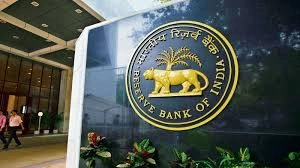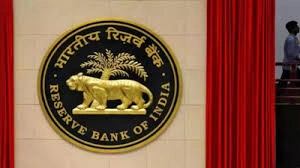RBI’s Monetary Policy Paper: Why Raising the Inflation Target Beyond 4% Could Be Risky
The Reserve Bank of India (RBI) has released an important discussion paper on the monetary policy framework that is drawing attention across the economic and financial community. At the center of this paper lies a clear warning: raising India’s inflation target above the current 4 percent could erode the policy gains that have been built up steadily over the past decade. This cautious stance reflects the central bank’s belief that monetary credibility and financial stability must not be compromised, especially in a time when the global economy is witnessing uncertainty.

The Importance of Inflation Targeting in India
India adopted an inflation-targeting framework formally in 2016 through the amendment of the RBI Act. This framework set a central target of 4 percent consumer price inflation, with a tolerance band of 2 percent on either side, meaning inflation could move between 2 and 6 percent while still being considered within the acceptable range. This target was not just an arbitrary figure; it was chosen as a balance point between price stability and economic growth.
Over the years, this system has helped anchor inflationary expectations and improved transparency in monetary policymaking. Investors, businesses, and households all began to form their decisions with the assurance that inflation would remain broadly within this range. This credibility was hard-won, as India previously had episodes of double-digit inflation that eroded purchasing power and dented economic confidence.
RBI’s Concerns Over Raising the Inflation Target
The RBI’s latest paper argues that raising the inflation target above 4 percent at this point could send the wrong signal to markets, businesses, and the public. It could be seen as the central bank diluting its commitment to price stability, thereby undermining the credibility of monetary policy.
Such a shift might also undo the gains made over the past decade. Inflation in India, though volatile due to food and energy shocks, has generally been brought under control compared to the pre-2014 period. The RBI’s framework has instilled a sense of predictability in price movements, and loosening the anchor now could bring back instability.
Key Questions Raised in the Discussion Paper
The RBI’s discussion paper is not just about defending the 4 percent target. It also seeks feedback from experts, economists, and stakeholders on four fundamental questions that could shape the future of India’s monetary policy framework.
The first question revolves around whether monetary policy should continue to target headline inflation, which includes volatile food and fuel prices, or shift focus to core inflation, which strips out such components and gives a more stable picture of underlying price pressures. Headline inflation is more relevant to consumers, but core inflation often provides a better signal for long-term monetary policy.
The second question asks whether the 4 percent target remains optimal in balancing India’s growth ambitions with the need for stability. While some argue that a slightly higher target might provide more room for growth, the RBI believes this could harm credibility.
The third question deals with the tolerance band of 2 to 6 percent. Should it remain, be narrowed, or even be scrapped altogether? The current band gives policymakers some flexibility to deal with supply shocks, but critics argue that such a wide band allows too much leeway and weakens accountability.
The fourth question touches upon whether India should retain a fixed 4 percent target or move toward maintaining only a range, which would give more flexibility but potentially dilute the clarity of the framework.
The Growth versus Stability Debate
Underlying all these questions is the fundamental dilemma of central banking: how to balance growth and stability. India, as one of the fastest-growing major economies, faces constant pressure to prioritize growth and job creation. At the same time, runaway inflation can wipe out the benefits of growth by reducing real incomes and destabilizing markets.
The RBI’s cautious stance suggests that it sees price stability as a precondition for sustainable growth rather than something that can be compromised in favor of short-term expansion. This is especially relevant today, when global factors such as energy price volatility, climate shocks affecting food production, and geopolitical tensions are putting upward pressure on inflation.
The Role of Expectations and Credibility
One of the most critical insights from the RBI’s paper is the emphasis on credibility. Central banks around the world, including the US Federal Reserve and the European Central Bank, are acutely aware that their effectiveness depends not just on the actions they take but also on how much the public trusts their commitment.
If households and businesses believe that inflation will remain close to the target, they set their wages, prices, and contracts accordingly. This creates a self-fulfilling cycle that helps keep inflation under control. But if people suspect that the central bank is willing to tolerate higher inflation, expectations can drift, making it harder to rein inflation back in without painful economic adjustments.
Global Context and Comparisons
India is not alone in facing this debate. Many central banks have set inflation targets, usually around 2 percent. Some emerging markets set slightly higher targets because their economies are more volatile. For instance, Indonesia and Brazil have targets above 3 percent. However, even in these countries, there is a recognition that credibility must not be undermined.
In fact, the global trend has been to reinforce, not dilute, inflation-targeting frameworks, especially after the turbulence caused by the COVID-19 pandemic and the subsequent inflation surge in advanced economies. The RBI’s insistence on caution reflects its awareness of this international backdrop.
Potential Risks of Changing the Target
Raising the inflation target might appear attractive in the short term, as it allows more space for growth-oriented policies and makes it easier for the central bank to declare success. However, the long-term risks are significant. A higher target could reduce foreign investor confidence in India’s financial stability, weaken the rupee, and increase borrowing costs. Domestically, it could erode household savings, as inflation eats away at real returns, and create uncertainty for businesses making long-term investment decisions.
The Road Ahead
The RBI has invited feedback on its discussion paper until September 18, which means economists, policymakers, and stakeholders will actively debate these issues over the coming weeks. The final decision will likely shape India’s monetary trajectory for the next decade.
What is clear, however, is that the central bank is determined not to compromise its credibility lightly. In a country where millions are still vulnerable to inflation’s impact on food and fuel prices, the stakes are too high to take risks with monetary stability.
Conclusion
The RBI’s discussion paper on monetary policy has sparked a critical debate about the future of inflation targeting in India. While some may argue for greater flexibility to support growth, the central bank has made it clear that price stability must remain the cornerstone of monetary policy. Raising the inflation target beyond 4 percent may look like an easy fix, but it carries the risk of undoing a decade’s worth of hard-earned gains in credibility and stability.
As India moves forward, the challenge will be to strike the right balance between fostering growth and maintaining trust in its monetary framework. For now, the RBI’s message is clear: inflation control is non-negotiable, and the 4 percent target remains the best anchor for India’s economic stability.
Follow us for more news at Valleynewz.com

